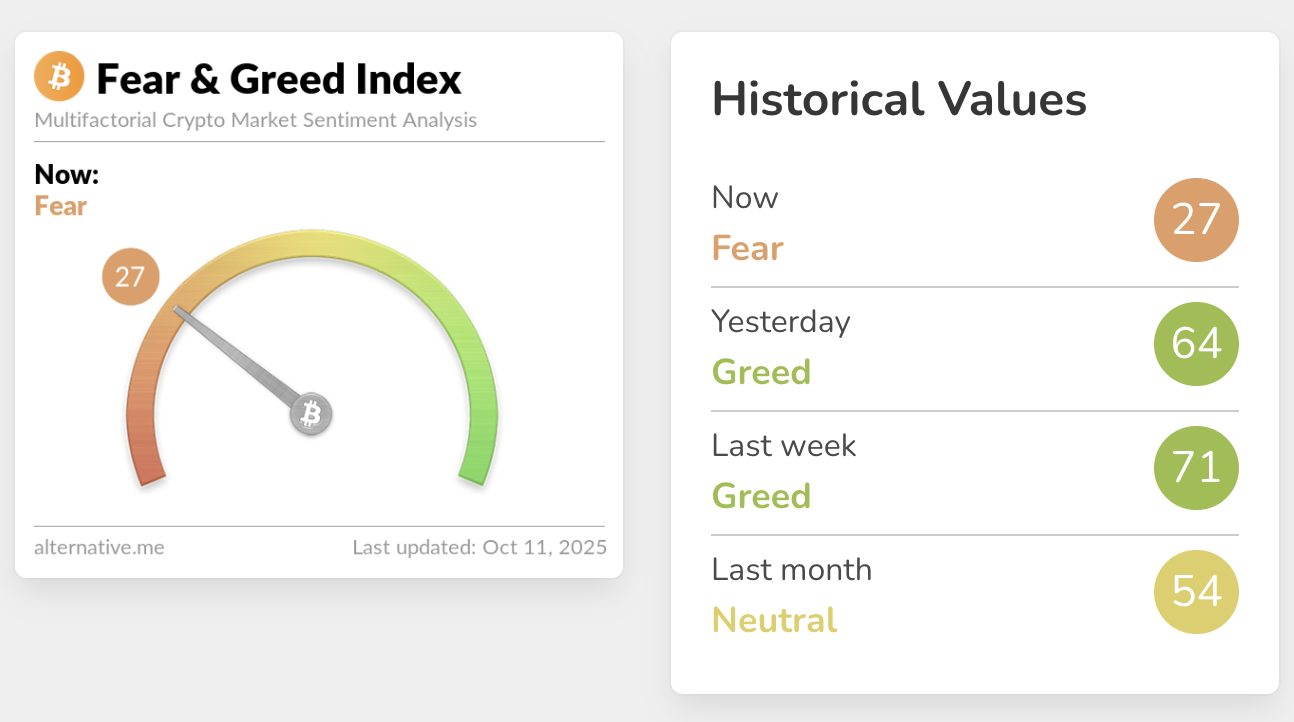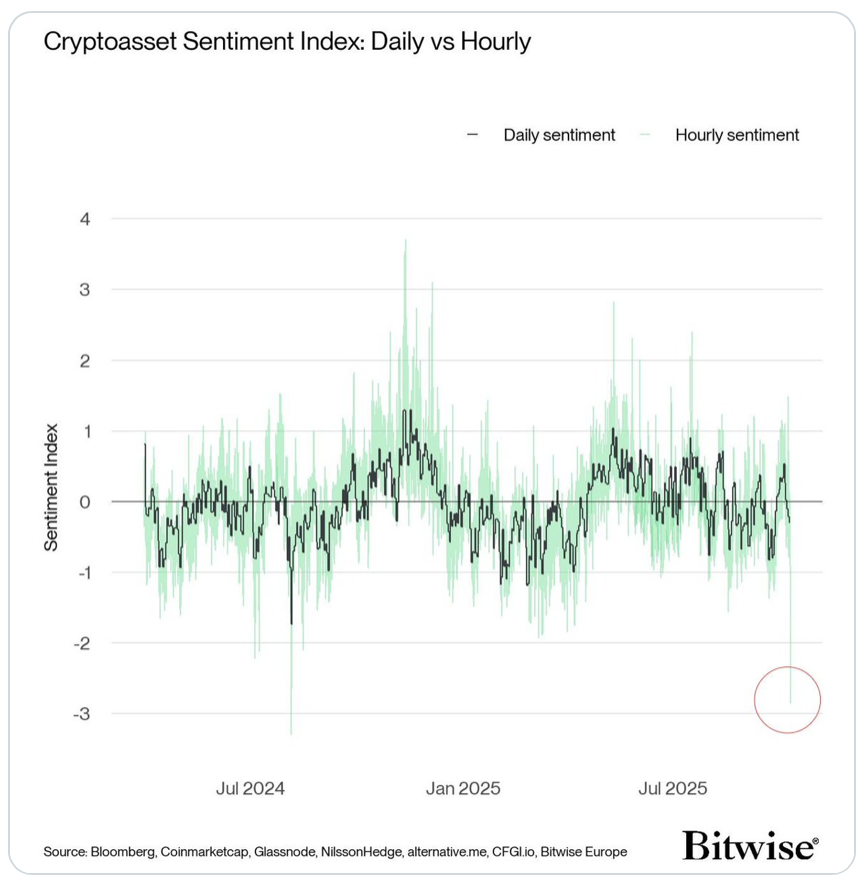The Crypto Fear & Greed Index fell to 27 after trade-tension headlines, signaling market “Fear” while Bitcoin briefly dipped to $102,000; institutional and retail liquidations exceeded $19 billion, creating a potential contrarian buying opportunity for long-term investors.
-
Fear & Greed Index: 27 — market sentiment moved from Greed to Fear within 24 hours.
-
Bitcoin briefly fell to $102,000; intraday liquidations were about $19.27 billion, per market trackers.
-
Bitwise’s intraday Sentiment Index hit −2.8 standard deviations, a rare contrarian buying signal.
Crypto Fear & Greed Index drops to 27 as Bitcoin dips to $102K; evaluate risk and consider contrarian signals — read analysis and next steps from COINOTAG.
The last time the Crypto Fear & Greed Index dropped to this level of fear, Bitcoin’s price was trading around $80,000.
Crypto market sentiment plunged to its lowest point in nearly six months after US trade headlines. The Crypto Fear & Greed Index fell to a reading of 27, shifting the market classification from recent “Greed” readings into clear “Fear.”
Bitcoin (BTC) briefly dipped to $102,000 on major perpetual futures pairs following the tariff announcement, and market-wide liquidations reached approximately $19.27 billion in the prior 24 hours, according to market trackers.

The Crypto Fear & Greed Index posted a “Greed” score of 71 when Bitcoin reached new highs on Monday. Source: Alternative.me
What is the Crypto Fear & Greed Index telling investors now?
The Crypto Fear & Greed Index reads 27, signaling market-wide fear and heightened risk aversion. Short-term indicators show elevated liquidations and volatility, while institutional sentiment metrics point to a contrarian buying setup for disciplined longer-term investors.
How did tariffs and headlines drive the recent sell-off?
The sell-off followed an announcement of sweeping trade tariffs, which triggered a rapid repricing of risk assets. Within 24 hours the index swung dramatically—from a “Greed” reading near 64 to 27—coinciding with a Bitcoin intraday low of $102,000 and roughly $19.27 billion in liquidations.
Why are institutional sentiment signals important now?
Bitwise research posted that its intraday crypto asset Sentiment Index reached −2.8 standard deviations, its lowest since a major unwind in summer 2024. This extreme reading is described by analysts as a “strong contrarian buying signal,” indicating institutional flows have moved into oversold territory.

Bitwise’s intraday cryptoasset sentiment index is flashing a “strong contrarian buying signal.” Source: Andre Dragosch
Market observers note the last comparable low for the Fear & Greed Index was April 16, 2025, when Bitcoin tumbled to around $77,000 amid escalating trade uncertainty. Days earlier, tariff policy had briefly eased; the renewed escalation reversed sentiment rapidly.
Frequently Asked Questions
How much was liquidated during the drop?
Approximately $19.27 billion in long and short positions were liquidated across the crypto market over 24 hours, reflecting forced deleveraging and amplified price moves.
Is low social-media euphoria a bearish sign?
Not necessarily. Analysts at Santiment observed muted social-media excitement despite fresh highs; low euphoria can signal limited retail speculation, which may moderate crash risk but also slow immediate momentum.
Key Takeaways
- Sentiment shift: The Crypto Fear & Greed Index fell to 27, indicating market fear.
- Market impact: Bitcoin dipped to $102K and ~ $19.27B in liquidations occurred within 24 hours.
- Actionable insight: Institutional sentiment gauges show deep negative deviation, which historically suggests a contrarian buying opportunity for phased, risk-managed entries.
Conclusion
Sharp tariff-driven headlines pushed the crypto market from Greed into Fear, creating volatile conditions and mass liquidations. The Crypto Fear & Greed Index at 27, combined with institutional sentiment extremes, signals a potential contrarian setup. Monitor liquidity, set strict risk controls, and consider phased strategies; COINOTAG will continue to track developments.
